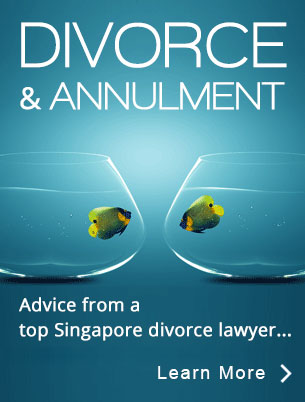So you’re being harassed
- If you find yourself on the receiving end of any behaviour which can be described as hostile, threatening and/or intimidating, you are more likely than not a victim of harassment.
- Some examples:
- being threatened by a person who has some of your personal information,
- being blackmailed for money,
- being sexually harassed in your workplace,
- being cyber-bullied,
- being stalked,
- being harassed by an unlicenced moneylender (note: this is slightly complicated by the fact that you yourself might be charged for a crime, since borrowing from an unlicenced moneylender is not legal),
- being victim of a person spreading false and/or sensitive information about you without your consent online.
- The Protection from Harassment Act was introduced in 2014 to provide stricter protection against perpetrators, and ensure that individuals remain safe both online and off, in public, as well as in the workplace.
- In a nutshell, the POHA would offer protection in the form of a Protection Order against any perpetrator.
- It is vital to note that while the POHA is applicable for most harassing cases, if the harassment is coming from a family member, the applicable statute is the Women’s Charter, and instead of a Protection Order, a Personal Protection Order will be ordered against the harassing family member.
How the law can protect you
Some advisable steps to take when you find yourself victim to threatening or intimidating behaviour:
- Self-help – inform the perpetrator to cease contacting or intimidating you
- Approach Consumers Association of Singapore (CASE) – for consumer matters
- Approach Community Mediation Centre – for community disputes
- Approach website host – for example, if the harassment is online, you can approach the website host if the
- perpetrator refuses to remove an offending publication of you despite your requests
- Make a police report
Basically, while the POHA is available, the above avenues should first be considered, if not for anything, for the legal costs involved.
If you have decided to take the legal route, you may
- Represent yourself (approach the Community Justice and Tribunals Division of the State Courts) or
- Engage a lawyer.
Elements of the Protection from Harassment Act (POHA)
Some of the more important portions of the Act will be highlighted herein:
- Section 3 Describes an offence where one intentionally causes harassment, alarm or distress to another
- Section 4 Describes an offence as well when one causes harassment, alarm or distress to another but proof of intention need not be fulfilled
- Section 5 Describes an offence where an action (which causes harassment, alarm or distress) causes the victim to fear unlawful violence
- Section 6 Protection for public service workers and public servants (from abuse by the public)
- Section 7 Describes the offence of unlawful stalking (course of conduct related to stalking which has the effect of causing harassment, alarm or distress)
- Section 8 Provides that repeat offenders (anyone found guilty of harassment more than once) face enhanced penalties
- Section 9 Provides for Community Orders (may be ordered to help offenders who have psychological or psychiatric conditions, allowing them to go undergo treatment in lieu of criminal penalties)
- Section 11 Provides that a victim may bring civil proceedings in Court against an offender, and the Court may award damages to the victim as a civil remedy
- Section 12 Protection Order
- Section 13 Expedited Protection Order
- Section 15 Non-Publication Order
- Section 17 Provides for offenders who are outside of Singapore (if the victim is in Singapore) as well as offenders in Singapore whose victims outside of Singapore
- Section 19 Provides for cases where the actual identity of an offender (for example a publisher online) cannot be ascertained
Remedies
Remedies available, as provided by sections 11 to 15 of the POHA are as follows:
Criminal sanctions
- Contravention of sections 3, 4, 5, 6 or 7 of the POHA attracts a jail term and/or fine for the offender
- Each offence that these section provides for attracts a different sanction from the other. For example, a section 3 offence results in a fine not exceeding S$5,000 or a prison term not exceeding 6 months or both, while a section 4 offence results in just a fine
- As per section 8, these sanctions are significantly enhanced if the offender is a repeat offender (higher fine and lengthier jail term)
Civil remedy
- A victim may sue the offender and be awarded damages
- Section 11 of the POHA creates this statutory right to bring an action for damages against an offender who has contravened sections 3, 4, 5, 6 or 7 of the POHA. So this is in addition to their fines and/or jail terms
- Damages recoverable are determined by the Court in accordance with existing laws
Protection Order
- Granted by the Court on a balance of probabilities if it is satisfied that the offender has contravened sections 3, 4, 5, 6, or 7 of the POHA, and the contravention is likely to continue
Expedited Protection Order
- Exactly the same as a PO, but for urgent cases
- The EPO is granted on an expedited basis for 28 days or until the first day of hearing of the application
- There is an added condition that the offending conduct must likely have a ‘substantial adverse effect on the victim or the victim’s day-to-day activities’ (section 13(3))
- Examples of adverse effects on victim’s day-to-day activities: changing routes to work, daily routines, putting in place additional security measures in the home, withdrawal from social interactions
- No appeal against the decision to issue an EPO is allowed (section 13(5))
Non-Publication Order
- This is a remedy which orders that the offender no longer be allowed to publish or continue to publish a false statement of the victim
- The Court considers some factors before granting this order, such as:
- Of course, whether the statement is indeed false
- Seriousness of allegation
- Purpose of false statement
- Impact of false statement
- Degree of adverse harm suffered by the victim as a result of the publication
- Degree to which false statement had been publicized
In an application for a PO or EPO, one may put in a clause that prevents anyone from publishing or continuing to publish a piece of offending material.
Filing for a PO/EPO
- Once you have decided to apply for a PO or EPO, you would commence action by filing for an Originating Summons (under POHA) (Form 235)
- It will include your prayers. Examples:
- That an offender is prohibited from going to the house and/or workplace of the victim
- That an offender is prohibited from contacting or communicating with the victim via any means, including calls, texts, emails, social media
- That an offender is prohibited from contacting or communicating with any of the victim’s family members or friends
- That an offender is prohibited from publishing or continuing to publish any materials related to the victim in any way
- You will then have to file an affidavit setting out the circumstances of the offender’s harassing behaviour, and detail why you required this order. You would have to be as detailed as possible, and this includes exhibiting proof of the harassing behaviour where possible (examples include text message archives or call logs showing an offender’s incessant harassment by phone, or screenshots of offensive publications online)
- In the affidavit, you would also be required to exhibit a document known as INFORMATION IN SUPPORT OF APPLICATION (Form 236). This contains all the pertinent details that a Judge would look out for in considering the case
- When the offender is served, he has the option to file his response (Form 237)
- The Judge will then decide whether to issue the PO/EPO/NPO
Timelines
- Applicant (the ‘victim’) files his Originating Summons and Affidavit via his solicitors
- If it is an EPO, at the time of filing (urgent filing), the Applicant is issued a Notice of Pre-Trial Conference. This Court date is usually within 3 days from the Notice
- If it is a PO (non urgent filing), the Applicant will be issued the same Notice, and the Court date is usually within 3 weeks from the Notice
- After filing (and the Summons has been accepted), the Applicant is to serve a copy each of the Summons and Affidavit to the Respondent (the ‘offender’), within 14 days
- If the Judge decides to grant the PO/EPO within this time, the Applicant has to extract the Order and serve it onto the Respondent together with the Summons and Affidavit
- The Applicant has to file an Affidavit of Service within 8 days of the service, to prove that the Respondent has been informed that proceedings have commenced
- If the Judge granted the PO/EPO already, it will only take effect after the Affidavit of Service is filed
- The Respondent has 14 days (from the date of being served) to file his Reply Affidavit if he wishes to contest or object to the PO/EPO. He has this 14-day window to serve one set of the Reply Affidavit and supporting evidence on the Applicant, as well as the Court
- If there is no Reply, the case is deemed concluded and there is no further action required by the Applicant. In the event that the Respondent contravenes the Order, the Applicant is able to take legal action against him
- If there is a Reply, the Applicant and Respondent will then be required to attend a Pre-Trial Conference (PTC) at the Community Justice and Tribunals Decision (CJTD)
- At the PTC the Court can make any of the following orders:
- Mediation between the parties
- Counselling for either of the parties (individual)
- Another PTC to be fixed (CJTD)
- Hearing fixed (CJTD)
Information provided by Gloria James-Civetta & Co













